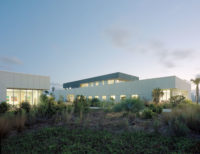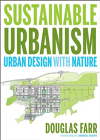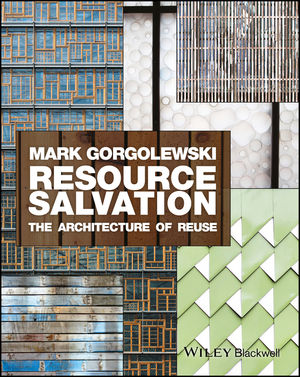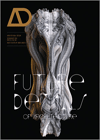Creating buildings that deliver on progressively more ambitious environmental goals will require energy simulations that reliably predict post-occupancy consumption.
Higher energy performance has evolved from an aspiration to an expectation. Owners of buildings—especially those certified under rating systems like LEED—increasingly count on an energy savings payback. And a wave of “net zero energy” buildings promises to generate enough energy on-site from renewable sources to equal or exceed demand. As a result, predictive energy models face new scrutiny. “In the last five years, energy modelers have learned that they will have to answer for their models,” says Laurie Canup, an associate with Portland, Oregon–based THA Architecture.
Energy modeling depends on physics-based simulation to predict how energy will flow through a building, taking account of mechanical systems, materials, control schemes, occupants, and weather. The software packages were created to help architects and engineers choose among competing design options, and they do that well. As Matthew Herman, an energy-modeling expert with engineering firm Buro Happold puts it: “The models are more than accurate enough to consistently drive design teams toward the right decision.”
However, predicting the raw kilowatt-hours of electricity or cubic feet of heating fuel that a building will consume is another story. Some recent projects show sizable gaps between prediction and performance. The primary problem is the unpredictable nature of humans. For example, users may occupy a building differently from how they were expected to, while owners routinely skimp on commissioning to find and fix faulty equipment. And building managers may reprogram controls, sacrificing energy performance for occupant comfort. “Modeling isn’t rocket science,” says Dennis Creech, executive director of Atlanta’s Southface Energy Institute. “It’s harder because there are people involved.”
In the past, some modelers exploited the resulting uncertainty by selecting assumptions that yielded trimmer energy predictions. Such “gaming” is on the decline, according to both architects and modelers. “There was a period where people were clearly greenwashing and making crazy claims,” says Herman. “A lot of that stopped during the recession.”
Model Early and Often
Despite the uncertainties and challenges involved, energy modeling has been riding an upswing over the past decade. Mitchell Dec has experienced that first hand. Dec was the only energy modeler at Glumac when he joined the Portland, Oregon–based engineering firm in 2005. In those early years, Dec was brought on to projects primarily after construction documents were already well advanced. His job was to assess whether a design could beat code-mandated performance to improve its LEED rating, and to tweak designs that fell short. “We’d count the beans. We were an afterthought,” he recalls.
Today Dec leads a 13-person energy-modeling group whose members engage at even the earliest stages of design. “Energy modeling early and often is the workflow for buildings that are 50 to 60 percent more efficient than code versus 15 to 20 percent better,” says Dec.
Stefano Schiavon, a modeling expert with the Center for the Built Environment at the University of California, Berkeley, agrees, adding that today’s highest-performing buildings could not exist otherwise. Without simulation, says Schiavon, it is impossible to predict the impact that largely passive energy-saving techniques such as natural ventilation and thermal storage will deliver.
The need to get these passive strategies right is driving software improvements. Older simulation packages such as eQuest are being eclipsed by more powerful tools. Commercial options include Virtual Environment, offered by London-based IES, and the TRNSYS code developed by the University of Wisconsin and applied most notably by German sustainable-design firm Transsolar. A new graphical user interface, meanwhile, is spurring adoption of EnergyPlus—an open-source upgrade of the U.S. Department of Energy modeling engines that underpin eQuest.
Schiavon says that the more sophisticated tools have enhanced capabilities for simulating daylighting and thermal properties and can model in two-to-three-minute intervals rather than hourly. This enables a more accurate understanding of the buoyancy effects that designers might exploit in atriums or solar chimneys, as well as better apprehension of the transfer of heat at work in features such as radiant floors.
High-performance buildings that meet or beat expectations show that models can accurately predict real energy use. Dec cites the 103,000-square-foot Lewis Integrative Science Building at the University of Oregon in Eugene completed in 2012, which was designed by a joint venture of Omaha, Nebraska'based HDR and THA and modeled by Glumac.
One component that involved extensive modeling is the lab building’s glass-covered atrium, where scientists mix and meet. THA wanted to take advantage of buoyancy to condition the three-story space by drawing in air, along with excess heat and cooling from adjacent labs. Making it work required extensive computational fluid dynamics (CFD) analysis to predict air and smoke movements during a fire.
The CFD models showed that passive ventilation alone might not clear smoke from the top level, necessitating ceiling fans to supplement the buoyancy-driven airflow. Nevertheless, even with the fans, the atrium cut the building’s predicted annual energy use per square foot—its energy use intensity or EUI—by 33 kBtus (33,000 British thermal units). Predicted EUI for the entire facility was 168 kBtus per square foot per year—60 percent better than the national average for lab buildings in 2003 and thus meeting the goal of the Architecture 2030 Challenge, which seeks to make new buildings carbon neutral by 2030. After one year of occupation, performance is slightly ahead of expectations, with an EUI of 163.
Tucson-based architect Jerry Yudelson, coauthor of The World’s Greenest Buildings: Promise Versus Performance in Sustainable Design, points to the Research Support Facility at the National Renewable Energy Laboratory (NREL) in Golden, Colorado, which is making good on its net zero design goal. “They’re pretty much right on the money,” says Yudelson. For the support facility’s first phase, which came online in 2010, modelers at engineering firm Stantec predicted an EUI of 35.1 kBtus. It consumed 35.4 during the first two years of operation. The second wing, completed less than one year ago, is beating expectations.
Reality Bites
While models can hit their marks, reality can also outwit simulation. Consider the 58,000-square-foot Health Professions and Student Services Building on the Danvers, Massachusetts, campus of North Shore Community College, which was one of the largest buildings to go for net zero energy when completed in 2011. Boston-based DiMella Shaffer was the architect, RDK Engineers designed the mechanical systems, and Buro Happold delivered energy modeling.
Modeling via EnergyPlus was supplemented with advanced CFD and lighting simulation to evaluate a wide range of options that would maximize on-site energy production and minimize consumption. Modeling showed that a demand for acoustically isolated classrooms precluded passive ventilation, pointing the design team toward a geothermal system instead. The building’s heat pump exchanges thermal energy between 500-foot wells drilled under the parking lot and interior chilled beams.
Modeling also drove the clerestory windows in the upper walls. “Energy modeling proved that it was desirable to have more daylight and thus less electricity running artificial lights,” recalls DiMella Shaffer principal Peter Shaffer.
After two years of occupation, however, the building is not operating at net zero energy. It is consuming 57 kBtu per square foot per year, double the modeled EUI. Offsetting the unexpected consumption would require more than double the 342 kilowatts of photovoltaics (PVs) installed.
The primary issue, says Shaffer, is an inefficient geothermal heat pump, which will be swapped out this winter. More chilled beams will also be installed to accelerate heating and cooling, in response to occupant complaints that prompted managers to keep the entire building conditioned overnight.
Peter Fourtounis, the project’s lead architect and now at Boston’s Elkus Manfredi Architects, adds that post-design decisions, including the addition of a computer lab and higher-than-expected plug loads, contributed to the performance gap. He also points out that the project had been designed for a PV array that was 15 percent larger.
User behavior has had a more positive impact on energy use at Hawaii Preparatory Academy’s Energy Laboratory in Kamuela, designed by Boston-based Flansburgh Architects, with energy modeling by Buro Happold. The building, completed in 2010, was shaped to enhance natural ventilation using CFD analysis. The structure backs into the prevailing wind, and air forced over its shed roofs creates negative pressure, pulling fresh air through automated louvers and windows. The results of that passive scheme, coupled with solar power, far exceed the building’s net zero energy goal. The building is operating without any mechanical cooling and consuming just over half as much energy as predicted.
What did the modeling miss? The site’s microclimate has been milder than Buro Happold’s assumptions, which were based on weather data collected on-site during design and from the nearby airport. But the bigger piece, according to Herman, is that the occupants tolerate conditions that are hotter and more humid than those outlined in ASHRAE Standard 55, which defines a range of indoor thermal conditions acceptable to most people. “They just wear Hawaiian shirts all the time. Even up to 82 or 83 degrees, they are still perfectly comfortable and don’t turn on the AC,” he says.
Occupant behavior was also a surprise for the historic warehouse renovation in Portland, Oregon, that architects GBD and Ankrom Moisan designed for Danish wind turbine manufacturer Vestas. The LEED Platinum–targeted project, completed in 2012, is slightly ahead of modeled energy performance overall, but the pattern of use was unanticipated, says Dec at Glumac, the project’s energy modeler: electricity consumption is about two thirds of what was modeled, while gas use runs 10 to 20 times higher in heating season.
Dec attributes the low power use, in part, to the behavior of reflected light. It’s a weak point for energy models, and the building’s daylit atrium is simply directing more light into adjacent offices than predicted. But he says bigger savings come from the ever-increasing efficiency of office computing equipment, which he calls a moving target.
Better office equipment and less electric lighting help explain the increased gas use, says Dec. With lighting and machines contributing less heat in cold weather, natural gas-fired heating has to make up the difference.
Feeding Back
Vestas got lucky, since lower power use more than offsets their increased gas consumption. Assuring greater accuracy up front, however, will require a closer fit between the assumptions modelers make and the behavior that follows.
Last year the Seattle-based New Buildings Institute offered one solution: national guidelines for those parameters not already defined by codes or standards. Mark Frankel, the institute’s technical director, says they based their COMNET guidelines on informed analysis of such factors as the number of computers in offices and how many stay on overnight.
Another accuracy-boosting strategy is to extend the model’s use beyond the design process. Modelers can help tune control systems, educate building users, and identify equipment malfunctions. Extended modeling is one reason NREL’s new structures are performing, says Tom Hootman, director of sustainability for Denver-based RNL, the project architect. Updated “as-built” energy models of each wing delivered by Stantec following construction give NREL what Hootman calls “a road map for net zero energy operation.”
Future projects benefit too, since prolonged involvement creates a feedback loop for validation of modeling tools and assumptions. A growing number of designers argue that, at the very least, design and engineering contracts should require owners to share post-occupancy energy data. Yudelson notes that such feedback is one key to meeting the stringent goals of the Architecture 2030 Challenge. “There’s a lot of learning that’s got to take place in the next five years,” he says. “This is serious stuff, and we’re not treating it seriously.”
Technology ReviewNature.
People |
Products |
















Post a comment to this article
Report Abusive Comment